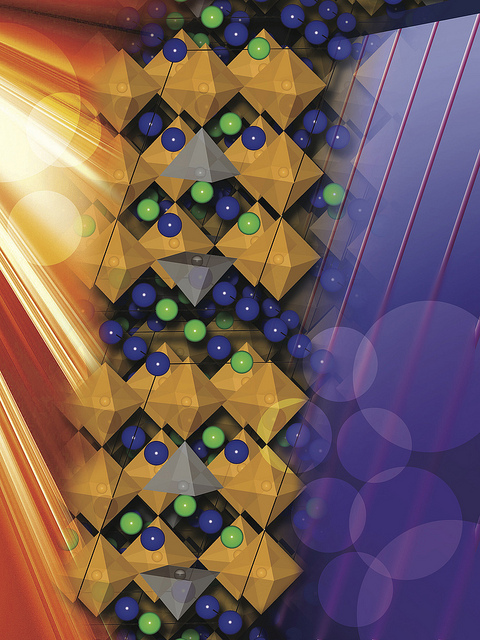Horizon
We've all seen how helpful solar panels are in renewable energy. From a consumer perspective, solar power is still an up-and-coming challenger to the existing fossil fuel infrastructure that most power generation systems take advantage of. The University of Michigan estimates that as little as 1.8% of US power generation in 2019 came from solar sources. Part of the reason this number is so low is why more commercial users haven't tapped into the technology. It makes little sense to go to the expense of installing a solar generation system based on the returns that it offers. However, that may soon change, based on new advances in technology.
A More Efficient Solar Cell
The solar cells we see most in consumer solar panels these days are silicon. However, since 2012, researchers have started tapping into a crystal lattice structure known as a "perovskite." According to The University of Washington’s Clean Energy Institute, a perovskite is any crystal that demonstrates a similar design to calcium titanium oxide. Generally, these compounds exhibit a similar structural composition.

Illustration of an experimental perovskite crystal created at Argonne National Laboratory. Image: Felice Macera.
When perovskite had been used in solar cells originally, their lifespan was only that of a few minutes. Researchers experimented with other compounds within the crystal structure and bumped this lifespan up to several months. Compared with silicon-based cells, months just weren't good enough, regardless of how efficient the photovoltaic cells that contained them were. The problem was to find combinations of materials that worked well as a perovskite structure that lasted for a decent amount of time and retained their energy conversion efficiency. A multidisciplinary team of researchers from MIT may just have found a solution to this problem.
A Massive Advance in Solar Cell Technology
The team from MIT came up with a method for pinpointing which materials worked well in the lattice structure of perovskite. Their system zeroed in on a combination that their lab improved ten times over. The team then used a real-world testbed to test the lifespan and efficiency of the cell. The results show a solar cell that demonstrates three times better performance than current formulations. The team is not satisfied yet, however.
An Iterative Approach
Generally, when you're trying to construct a perovskite, you want to use different materials in the variable spots. Because of the wide availability of materials that can fit those slots, the permutations are enormous. The team uses an iterative methodology they call a data fusion approach. The production of a new perovskite follows specific basic criteria, and each one is tested. The results inform the machine about viable samples, and those then go for physical modeling to see if they're possible matches for real-world applications. With each round of experiments, the machine further enhances the perovskite, turning it into a more efficient material for use in solar panels.
Using Today's Technology
When we look at massive, sweeping advances in technology, it's usually because of a genius moment by a scientist. However, with technology helping humanity grasp new ways of doing things, this method of advancement may be outdated. The machine learning model takes modern technology and applies it to a problem that we want to solve. The numbers demonstrate that the methodology is sound even with such a massive volume of potential successes. Taking less than two percent of the possible combinations for a perovskite, the machine learning model managed to craft the most stable version of perovskite produced to date.
The methodology doesn't just look at the final product and extrapolate from there, however. As any researcher will tell you, modeling and simulation don't always translate equally to the real world. The team knew this, and in their question to develop a better, more stable material, they started from the basic building blocks. Each of the chemicals included in the crystal is stable on its own. The crystal structure itself goes through rigorous testing in the lab. To guarantee its abilities, the team incorporated it into a test solar cell. When the cell was used in a controlled environment, its results were staggering compared to cutting-edge perovskite cells.
Using Physics to Guide Innovation
The advancement is exciting in multiple ways. Having a potentially more efficient solar cell is an important goal for renewable energy researchers. However, more importantly, is their iterative methodology when applies to different disciplines. Instead of the typical massive jump in innovation in a field, we may see something unique in scientific learning. With the iterative method, there might be vast bursts of technological advancement from the component and sub-component levels. The approach is not dissimilar to that used by an AI-powered logo design company.
Optimizing scientific advances takes time. As we've seen in recent years, development in some fields happens slowly. Yet this methodology used to develop the perovskite cells can be helpful in other branches of science as well. Instead of using hard constraints in researching new technology and materials, the machine learning algorithm can use experimental data and physics first principles to inform its innovation. As machine learning improves, we may see more areas of science and engineering adopt it as a viable way of narrowing down advancements. This methodology could be the start of a new renaissance for science and technology.




Comments